27 start with E start with E

The first book in English on the founder of Arabic linguistic theory, this interdisciplinary collection explores the contributions to Arabic intellectual history of al-Khalil ibn Ahmad, (d. A.H. 175/A.D. 791).
Al-Khalil was distinguished in his own time as a lexicographer, phonologist, grammarian, educator and musicologist. In the Arab world, his stature is almost legendary, although information on his life, his works and his achievements is fragmented. He is remembered principally for two achievements: the creation of the first dictionary of the Arabic language (Kitab al-'ayn, "The Book of 'ayn"), and discovery of the rule-governed metrical systems used in pre-Islamic Arabic poetry. His biographers also cite publications on musical theory and have preserved fragments of his poetry. In addition to these achievements, he was also the teacher of the medieval Islamic world's most distinguished authority on Arabic grammar, Sibawayh.
Conceived as a tribute to al-Khalil’s influence on Arabic language sciences, this book provides a new and broader perspective on al-Khalil’s talents, character, and fields of interest. It should be of interest to Arabic linguists, medievalists, historians of linguistics, theoretical linguists, historians of science and scholars of medieval Arab intellectual history.

The Middle East has become an increasingly important place in the minds and concerns of the English-speaking world. This volume, originally published under the title Jerusalem Arabic, is the gold standard for anyone beginning to learn the Arabic spoken by Palestinians, or those who live in Syria or Lebanon.
Written in transcription using the Roman alphabet, the "Levantine" Arabic, or Jerusalem dialect, is a central Middle Eastern dialect and is recognized by Arabs virtually anywhere—in large part due to the Palestinian diaspora—and a good choice for anyone wishing to learn a base Arabic dialect. Enhanced by audio MP3 files—available for free download at www.press.georgetown.edu—Eastern Arabic provides the best available structured introduction to the essential features and vocabulary of spoken Palestinian Arabic.
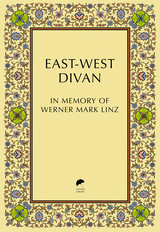
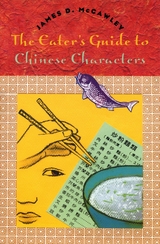
With this guide in hand, English speakers hold the key to a world of tantalizing—and otherwise unavailable—Chinese dishes.
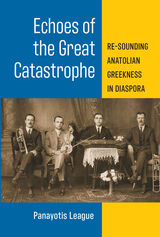
Echoes of the Great Catastrophe: Re-sounding Anatolian Greekness in Diaspora explores the legacy of the Great Catastrophe—the death and expulsion from Turkey of 1.5 million Greek Christians following the Greco-Turkish War of 1919–1922—through the music and dance practices of Greek refugees and their descendants over the last one hundred years. The book draws extensively on original ethnographic research conducted in Greece (on the island of Lesvos in particular) and in the Greater Boston area, as well as on the author’s lifetime immersion in the North American Greek diaspora. Through analysis of handwritten music manuscripts, homemade audio recordings, and contemporary live performances, the book traces the routes of repertoire and style over generations and back and forth across the Atlantic Ocean, investigating the ways that the particular musical traditions of the Anatolian Greek community have contributed to their understanding of their place in the global Greek diaspora and the wider post-Ottoman world. Alternating between fine-grained musicological analysis and engaging narrative prose, it fills a lacuna in scholarship on the transnational Greek experience.
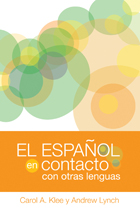
El español en contacto con otras lenguas is the first comprehensive historical, social, and linguistic overview of Spanish in contact with other languages in all of its major contexts—in Spain, the United States, and Latin America. In this significant contribution to the field of Hispanic linguistics, Carol A. Klee and Andrew Lynch explore the historical and social factors that have shaped contact varieties of the Spanish language, synthesizing the principle arguments and theories about language contact, and examining linguistic changes in Spanish phonology, morphology and syntax, and pragmatics.
Individual chapters analyze particular contact situations: in Spain, contact with Basque, Catalan, Valencian, and Galician; in Mexico, Central, and South America, contact with Nahuatl, Maya, Quechua, Aimara, and Guarani; in the Southern Cone, contact with other principle European languages such as Portuguese, Italian, English, German, and Danish; in the United States, contact with English. A separate chapter explores issues of creolization in the Philippines and the Americas and highlights the historical influence of African languages on Spanish, primarily in the Caribbean and Equatorial Guinea.
Written in Spanish, this detailed synthesis of wide-ranging research will be a valuable resource for scholars of Hispanic linguistics, language contact, and sociolinguistics.
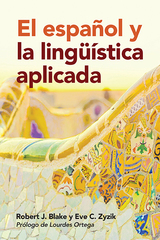
Informed by the latest research in the fields of second language acquisition and applied linguistics, El español y la lingüística aplicada responds to the central questions that lie at the heart of learning Spanish as a second or foreign language. What does it mean to know a language? Can technology help second language learners? How does studying abroad promote language acquisition?
Framing chapters in terms of these and other critical areas of inquiry, Robert J. Blake and Eve C. Zyzik examine the linguistic challenges and pitfalls involved in Spanish-language learning and delve into practical implications for students and teachers. Written entirely in Spanish, some chapters focus on specific areas of Spanish grammar that tend to pose difficulty for learners, while others explore broad pedagogical themes related to the concept of proficiency, the nature of input, and the impact of learning context. Each chapter ends with a series of guided questions for reflection and further research.
Designed to address the pre-service training needs of Spanish language professionals, El español y la lingüística aplicada will also be of interest to anyone wishing to develop linguistic expertise in this important world language.
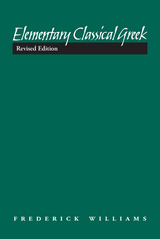
Now in paperback for the first time, Elementary Classical Greek is a trusted handbook for learning the language that does not presuppose a knowledge of Latin. Based on the premise that average American students can learn the language, the lessons are thorough but not pedantic, simple but not superficial, and the textbook has been proven in the classroom and for independent learners.
Elementary Classical Greek stresses a clear and orderly presentation of the language, accompanied by individual sentences or short passages that illustrate grammar, give practice in reading, and help build vocabulary. Drawing on decades of experience teaching classical Greek, Frederick Williams presents a text in which grammatical explanations are clear, succinct, and correct and the selected readings are varied, interesting, and useful. Included in the nearly one-hundred reading passages are excerpts from Plato’s Ion and Republic, Aristophanes’s Clouds, and Paul’s first letter to the Corinthians.
The popular textbook is designed for a course meeting for two semesters. There are twenty-four lessons in all, with appendixes on prepositions, Greek numbers, and the Greek verb, plus Greek-English and English-Greek vocabularies, a grammatical index of subjects, and a list of Greek authors cited. Selected readings are presented first in simple, then more complex, language until the reader is led to the actual words of the ancient author—all within the same lesson. This elementary device helps bridge many of the difficult gaps between modern English and ancient Greek.
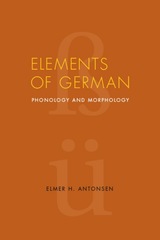
Elements of German fills a gap in advanced undergraduate and beginning graduate levels of German language study by presenting more advanced concepts of the language in a light intended for practical use rather than theoretical discourse. This text provides a means to improve knowledge and command of grammatically correct German as it is spoken and written. It also introduces methods and tools of linguistic analysis in the areas of phonology and morphology. Unlike books that treat phonology in a cursory way, this text delves into the problems of word formation and the intricacies of inflection and derivation. Exercises are included throughout to help better absorb the rules for real-world language use. This volume provides an in-depth look at the German language from the ground up. Its detailed approach makes this book an excellent complement to the work of less specific grammar textbooks and reviews.
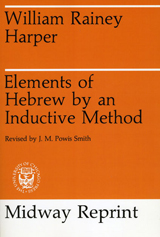
"This inductive method in the teaching of grammar is educationally sound, and in employing it in this text some eighty years ago, the author was certainly far ahead of his time."—William Chomsky, Jewish Bookland
"A treatment of much that is essential in Hebrew grammar. . . .useful tools to the divinity student and instructor in biblical Hebrew."—David Weinstein, Jewish Education
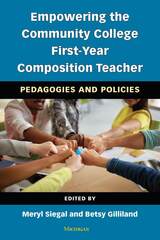
This volume is an inquiry into community college first-year pedagogy and policy at a time when change has not only been called for but also mandated by state lawmakers who financially control public education. It also acknowledges new policies that are eliminating developmental and remedial writing courses while keeping mind that, for most community college students, first-year composition serves as the last course they will take in the English department toward their associate’s degree.
Chapters focusing on pedagogy and policy are integrated within cohesively themed parts: (1) refining pedagogy; (2) teaching toward acceleration; (3) considering programmatic change; and (4) exploring curriculum through research and policy. The volume concludes with the editors’ reflections regarding future work; a glossary and reflection questions are included.
This volume also serves as a call to action to change the way community colleges attend to faculty concerns. Only by listening to teachers can the concerns discussed in the volume be addressed; it is the teachers who see how societal changes intersect with campus policies and students’ lives on a daily basis.

Students of advanced Spanish share a desire to use and understand the language, even as their backgrounds and goals for the language may vary widely. En otras palabras provides advanced learners of Spanish with hands-on manipulation of grammatical, lexical, and cultural detail through the practice of translation (traducción). This challenging and enjoyable textbook—now in its second edition with up-to-date texts on current events, new exercises, and new and expanded instructions—presents students with incisive grammar explanation, relevant lexical information, and a wide variety of translation texts and exercises in order to increase their mastery of the Spanish language.
En otras palabras contains Spanish texts to be translated into English as well as English texts for translation into Spanish. Translating into English requires students to understand every detail of the Spanish text and decide how these details might best be expressed in English. Translating into Spanish requires students to recognize how Spanish structures and words do—and do not—parallel those of English. Both activities provide advanced students of Spanish with an invigorating linguistic workout and serve as an effective introduction to the practice of translation.
Translation is a cultural as well as a linguistic activity; for students, learning how to translate provides invaluable experience of the inseparability of language and culture. En otras palabras addresses the errors made by advanced learners of Spanish while involving students in the pleasurable, problem-solving process of translation. This second edition contains a wide variety of usage-based exercises for both individual and group work. Concise and complete texts feature narrative and description, marketing and publicity materials, medical and legal topics, sports journalism, and internet posts.
En otras palabras is designed for a three-credit semester class; an online Instructor's Manual is provided at no charge to professors who adopt the text in their classrooms.
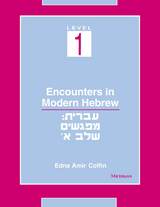
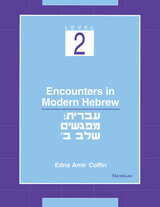
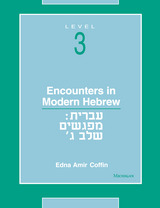
This volume shows students a wider range of Hebrew-speaking cultural activities in a larger human context, from materials about holidays, including a Jewish holiday celebrated only in North Africa, to discussions of the roles of women that raise the issue of gender equality. Other chapters examine ethnic jokes and their problematic qualities, geography, and the differences between popular and literary language registers. Encounters in Modern Hebrew, Level 3 ushers the Hebrew student through a wide domain of the human community.
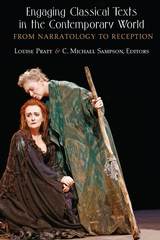
This volume considers perennial favorites of classical literature—the Iliad and Odyssey, Greek tragedy, Roman comedy, the Argonautica, and Ovid’s Metamorphoses—and their influence on popular entertainment from Shakespeare’s plays to Hollywood’s toga films. It also engages with unusual and intriguing texts across the centuries, including a curious group of epigrams by Artemidorus found on the island sanctuary of Thera, mysterious fragments of two Aeschylean tragedies, and modern-day North African novels. These essays engage an array of theoretical approaches from other fields—narratology, cognitive literary theory, feminist theory, New Historicist approaches to gender and sexuality, and politeness theory—without forsaking more traditional philological methods. A new look at hospitality in the Argonautica shows its roots in the changed historical circumstances of the Hellenistic world. The doubleness of Helen and her phantom in Euripides’ Helen is even more complex than previously noted. Particularly illuminating is the recurrent application of reception studies, yielding new takes on the ancient reception of Homer by Apollonius and of Aeschylus by Macrobius, the reception of Plautus by Shakespeare, and more contemporary examples from the worlds of cinema and literature.
Students and scholars of classics will find much in these new interpretations and approaches to familiar texts that will expand their intellectual horizons. Specialists in other fields, particularly English, comparative literature, film studies, and gender and sexuality studies, will also find these essays directly relevant to their work.
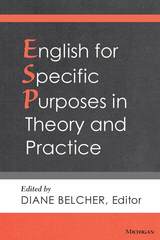
The field of English for Specific Purposes (ESP) is among the richest areas of second language research and practice because increasing globalization and changing technologies spawn new modes of intercultural connection and new occasions for second language use. English for Specific Purposes in Theory and Practice compasses this burgeoning field by presenting new research and commentary from some of the field’s leading scholars.
This volume explores ESP from academic (secondary and tertiary), occupational (business, medical, and legal), and socio-cultural perspectives. Recurring motifs throughout the volume are the effects of globalization, English as a lingua franca, and the impact of migrant populations. One of the major questions this volume seeks to answer is, How can ESP instructors meet their own teacher knowledge needs? Also considered is, How have ESP practitioners succeeded in gaining control of the knowledge they need to address their students’ needs?
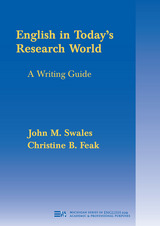
In addition to instruction on writing for publication, English in Today's Research World provides needed advice on applications, recommendations, and requests--types of communications that are particularly vulnerable to influences from national cultural expectations and conventions and that, therefore, place the NNS writer at increased disadvantage.
The text is both a reference manual and a course book, so that researchers can continue to use the book after they have completed their formal education. New ESL/EFL teachers can use English in Today's Research World as a reference book for themselves or as a teaching aid in the classroom.
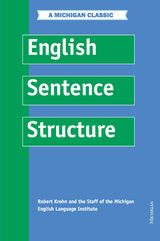
English Sentence Structure presents and clarifies all facets of the sentence for beginning and intermediate students. Oral drills, examples, and written exercises form a pattern of regular review and self-evaluation. Each lesson is coordinated with English Pattern Practices.
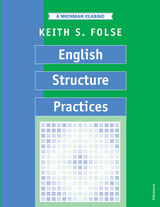
This is the workbook to accompany English Sentence Structure.
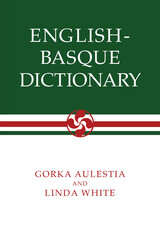
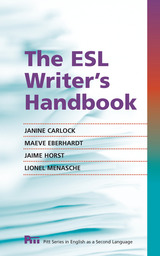
The ESL Writer’s Handbook is a reference work for ESL students who are taking college-level courses. Because its purpose is to provide help with the broad variety of writing questions students may have when working on school assignments, the text focuses on
English for Academic Purposes. Unlike other handbooks on the market, this book’s sole purpose is to address the issues of second language learners.
This spiral-bound Handbook complements a student writer’s dictionary, thesaurus, and grammar reference book. It would be suitable as a text for an advanced ESL writing course when used together with the companion Workbook (978-0-472-03404-8). The Handbook is concise and easily navigated; is accessible, with clear and direct explanatory language; features information on both APA and MLA styles (including a sample paper for each); and includes many examples from ESL student writers to provide realistic models.
Included as special features in the Handbook are:
• The topic selection is based on ESL writers’ needs as observed by the authors over many years.
• The coverage of topics is more complete than the limited amount usually provided for ESL writers in first language or L1 handbooks.
• The explanatory language is appropriate for ESL students, in contrast to the more complex and idiomatic language of other English handbooks.
• The level of detail is more manageable for ESL students, compared to what is in other English handbooks.
- Many of the examples of paragraphs, essays, research papers, and exercise sentences were written by ESL students; this encourages users of this Handbook to realize that they can also become effective writers.
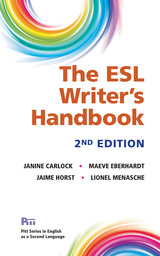
The spiral-bound Handbook complements a student writer’s dictionary, thesaurus, and grammar reference book. It would be suitable as a text for an advanced ESL writing course when used together with the companion Workbook (978-0-472-03726-1).
The new edition features significant revisions to Sections 3 and 4; in particular, both APA and MLA style guides have been updated and new sample papers for each are included. The new edition includes new and revised exercises and many new samples of student writing.
Like its predecessor, the 2nd Edition has these special features:
- The topic selection is based on ESL writers’ needs as observed by the authors over many years.
- The coverage of topics is more complete than the limited amount usually provided for ESL writers in first language or L1 handbooks.
- The explanatory language is appropriate for ESL students, in contrast to the more complex and idiomatic language of other English handbooks.
- Many of the examples of paragraphs, essays, research papers, and exercise sentences were written by ESL students to help users realize that they too can become effective writers.
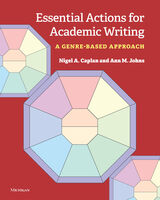
Part I:
- Introduces students to rhetorical situation, genre, register, source use, and a framework for understanding how to approach any new writing task.
- Demonstrates that all writing responds to a context that includes the writer’s identity, the reader’s expectations, the purpose of the text, and the conventions that shape it.
- Explores the essential actions of academic writing (explain, summarize, synthesize, report and interpret data, argue, respond, and analyze).
- Provides examples of the genres and language that support each action.
- Offers four extended projects that combine the essential actions in different genres and contexts.

A highly communicative approach to Intermediate Russian grounded in everyday culture and authentic texts
Etazhi uses the communicative approach to advance student’s Russian proficiency from the Novice High / Intermediate Low level of the ACTFL scale to an Intermediate Mid / Intermediate High level. Designed for one academic year of instruction, Etazhi engages students with highly relevant topics to internalize new vocabulary, expand their grammatical reach, and deepen their cultural understanding of Russian speakers.
Chapters on Russian daily life, travel, dating and marriage, clothing, cuisine, health and medicine, education, holiday traditions, and careers are infused with humor and help students acquire the vocabulary and cultural nuance needed to discuss Russian literature, culture, and the arts. Hundreds of authentic texts, photographs, and illustrations gathered from across the Russian Federation–including authentic material written by real people about their experiences in Russia–show the diversity of Russian speakers, culture, and society. Each of the six chapters contains approximately fifty exercises that help students practice the four basic language skills–listening, speaking, reading, and writing.
This textbook improves vocabulary and grammar while promoting deeper cultural competency, preparing students to study abroad, and providing a firm foundation for advanced courses.
Special features include:
- Audio transcripts to aid in comprehension checks (available for free on the Press's website)
- A grammar reference with charts and tables, including case and verb charts
- An extensive Russian-English glossary
- Over 120 authentic photographs and hand-drawn images by a Russian artist
- A sample of presentation materials and a sample exam for chapter one to aid instructors (available for free on the Press's website)
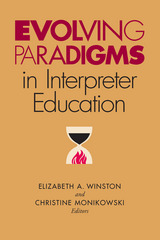
This volume brings together a cadre of world-renowned interpreting educators and researchers who conduct a rich exploration of paradigms, both old and new, in interpreter education. They review existing research, explicate past and current practices, and call for a fresh look at the roots of interpreter education in anticipation of the future. Expert commentary accompanies each chapter to provide a starting point for reflection on and discussion of the growing needs in this discipline.
Volume coeditor Christine Monikowski begins by considering how interpreter educators can balance their responsibilities of teaching, practice, and research. Her chapter is accompanied by commentary about the capacity to “academize” what has been thought of as a semi-profession. Helen Tebble shares research on medical interpreting from an applied linguistic perspective. Terry Janzen follows with the impact of linguistic theory on interpretation research methodology. Barbara Shaffer discusses how interpreting theory shapes the interpreter’s role. Elizabeth A. Winston, also a volume coeditor, rounds out this innovative collection with her chapter on infusing evidence-based teaching practices into interpreting education. Noted interpreter educators and researchers also provide an international range of insights in this collection, including Rico Peterson, Beppie van den Bogaerde, Karen Bontempo, Ian Mason, Ester Leung, David Quinto-Pozos, Lorraine Leeson, Jemina Napier, Christopher Stone, Debra Russell, and Claudia Angelelli.
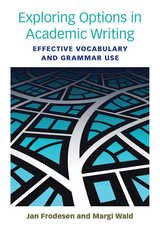
Following a unit on using resources for vocabulary development, the contents are divided into three parts: Showing Relationships within Sentences, Connecting and Focusing across Sentences, and Qualifying Statements and Reporting Research. Part 1 focuses on verbs and modifiers that express increases and decreases, verbs and abstract nouns that describe change, connectors and verbs describing causal relationships, and parallel structures. Part 2 explores the words that help connect ideas and add cohesion. Part 3 discusses how to express degrees of certainty and accuracy and the use of reporting verbs.
READERS
Browse our collection.
PUBLISHERS
See BiblioVault's publisher services.
STUDENT SERVICES
Files for college accessibility offices.
UChicago Accessibility Resources
home | accessibility | search | about | contact us
BiblioVault ® 2001 - 2024
The University of Chicago Press









